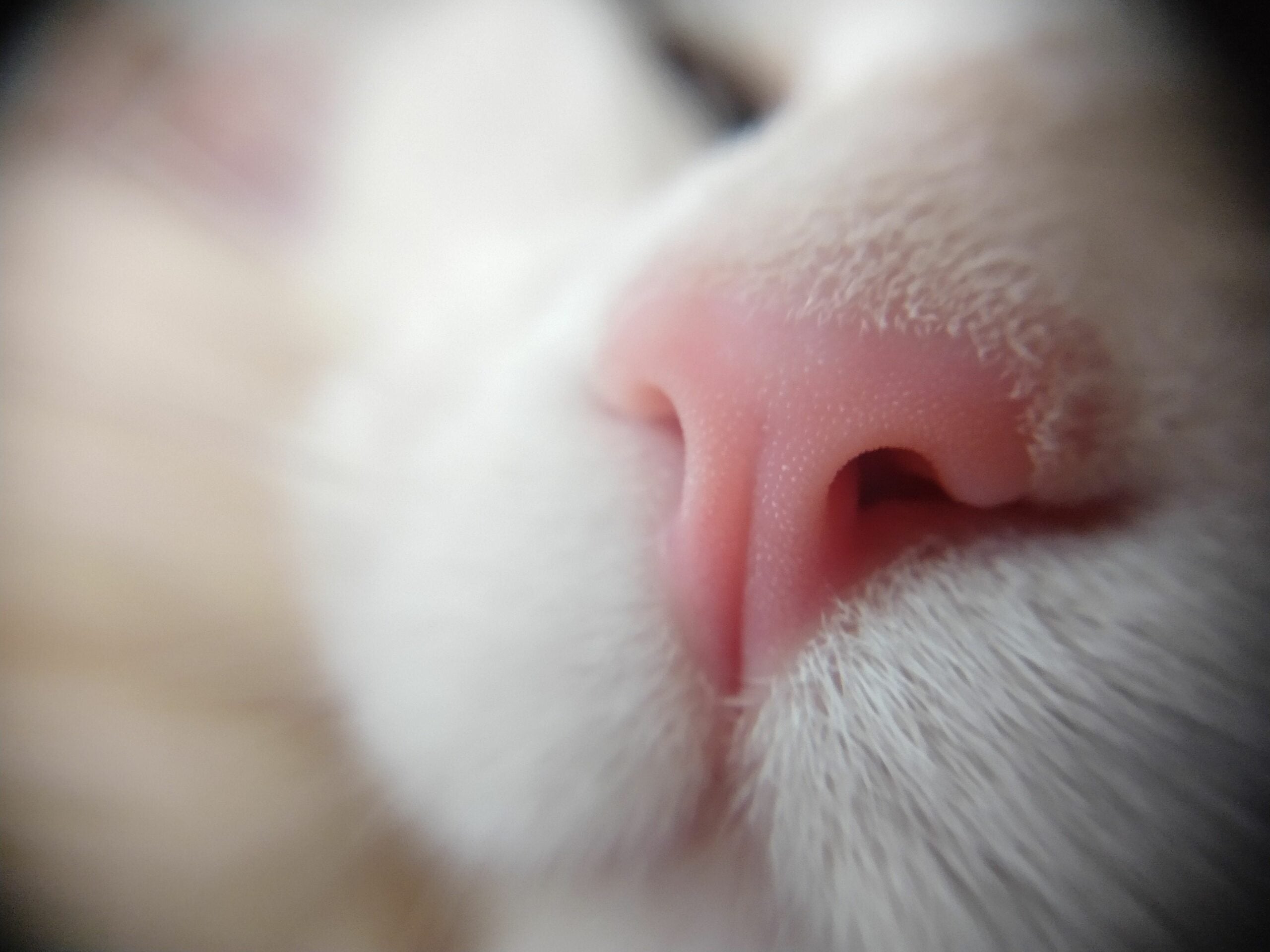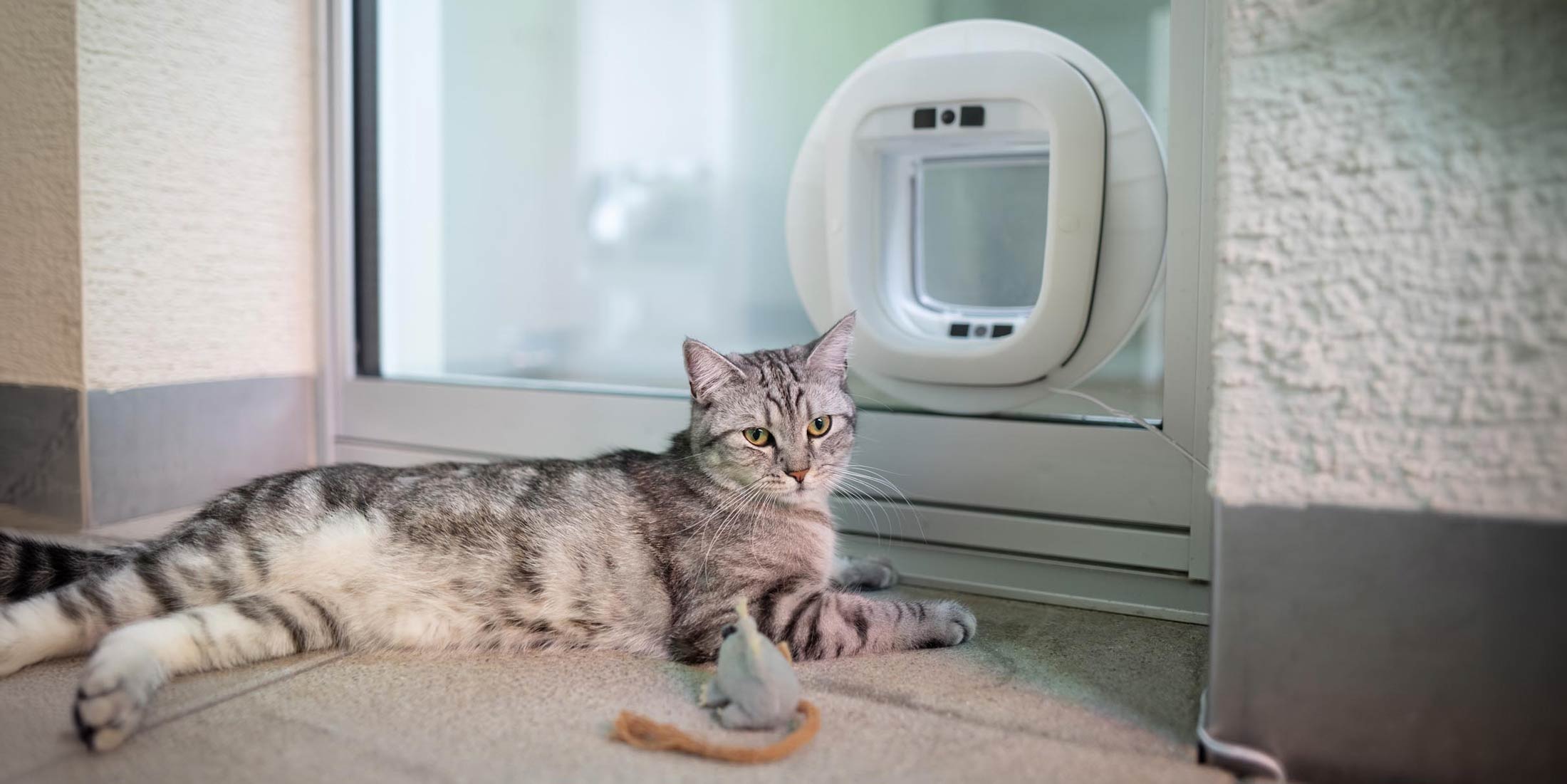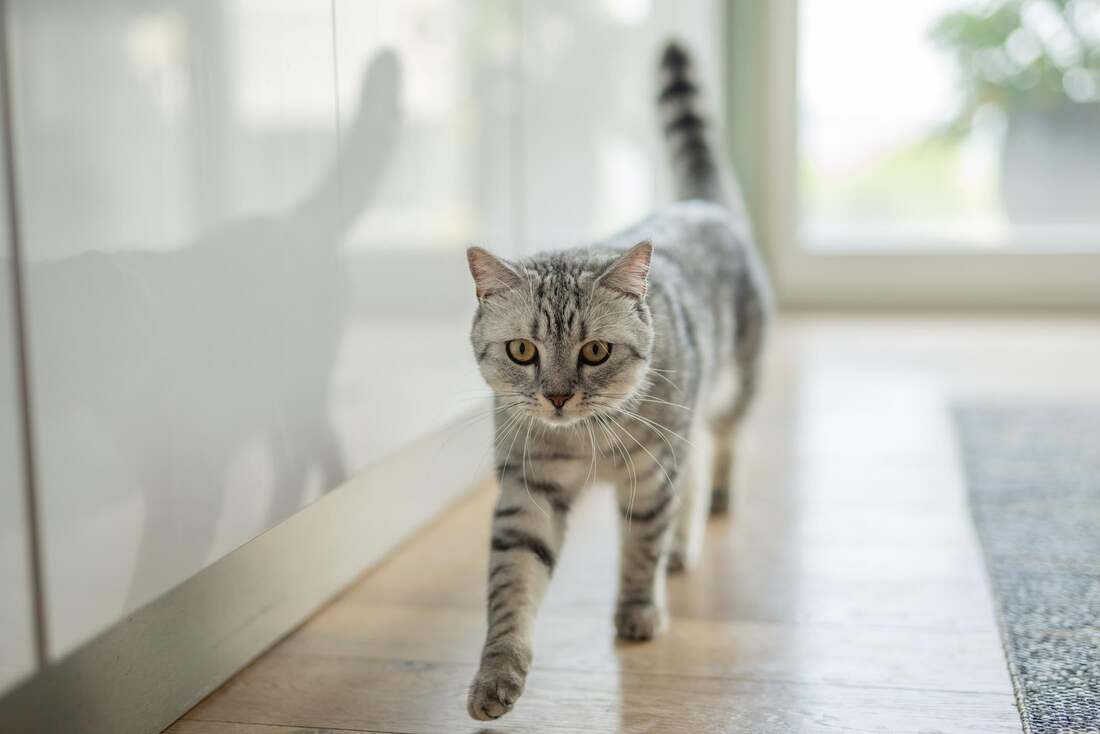Every cat owner knows it: the gentle purring that suddenly turns into a flash of sharp teeth. But why does your beloved furry friend suddenly turn into a small predator?
Cats bite for a variety of reasons, including play, pain, fear, or to defend their territory.
In this article, we delve deep into the world of cat communication and discover why cats bite and how we as owners can deal with it.
Is it normal for cats to bite?

Many cat owners wonder if it is normal for their cat to bite. The answer is yes, it is normal behavior . Cats are predators by nature and biting is part of their instincts. It is a form of communication and expression that can have many causes. For example, a bite during play may simply mean that your cat is getting caught up in their own little hunting simulation.
However, there are other reasons why a cat might bite:
- Overstimulation : Too much petting can be too intense for some cats and they may bite to indicate they have had enough.
- Fear or insecurity : In new or threatening situations, a bite can be a defensive reaction.
- Pain : When a cat is injured or uncomfortable, it may bite to protect itself.
It is important to understand that not every bite is a sign of aggression. Often it is a part of natural behavior and can be managed with patience and understanding by owners. By identifying the reasons behind your cat's biting, you can better respond and help her feel safe and understood in her environment.
Meanings behind the bite: Why cats bite
Cats are fascinating creatures whose behavior is often puzzling. One behavior that cat owners often see is biting. This can have many different meanings and is not always a sign of aggression. In this section, we look at why cats bite and what might be behind this behavior. It is important to understand the reasons in order to be able to react appropriately.
The reasons for biting are varied and range from natural instincts to social interactions. For example, cats bite :
- To play and live out their hunting instincts.
- As an expression of affection in the form of love bites.
- If you are in pain or feel unwell.
- To defend themselves when they feel threatened.
It is important to observe your cat's behavior and understand the context in which biting occurs. Pay attention to body language and situations :
- Does your cat bite while playing or when being petted?
- Does she show signs of fear or discomfort?
- Could it be that she is in pain?
Recognizing and interpreting your cat's body language is crucial. Cats communicate a lot through their body posture, ear position, and tail movements. Learn to understand these signals to know when your cat is ready to play or would rather be left alone.
Finally, it is important to emphasize that biting is not always negative and can often be associated with positive behaviors. With patience and a proper understanding of your cat's needs, you can build a loving and harmonious relationship with your pet and learn to manage biting.
Play or serious? When cats bite while playing

Cats are playful animals and biting during play is a typical behavior. It is a way for them to practice hunting behavior and should not always be mistaken for aggression. During play, biting can be a sign of engagement and fun.
However, there are times when the game gets too rough and the cat bites too hard. To tell if it's play or serious, look for :
- The intensity of the bite.
- The body language of the cat while playing.
- Whether the cat is relaxed or shows signs of stress.
If you find that play is getting too intense, it's important to redirect your cat's behavior. Use toys to get your cat's attention and discourage them from biting. This will help you learn to better manage your cat's play behavior and contribute to a safe play environment.
Cuddle time with a bite: The love bite explained
The love bite is a special phenomenon in the behavior of cats. It is a gentle bite that can be interpreted as a sign of affection and well-being. A love bite can occur when :
- Your cat feels particularly connected.
- She is in a very cuddly state.
The love bite should not be confused with an aggressive bite. It is usually gentle and not painful. However, if you do not want to be bitten, it is important to set boundaries and gently correct the behavior when necessary.
To manage love bites, you can stop cuddling as soon as your cat bites and show her that this behavior is not welcome with a firm "no." Instead, offer her a toy to bite on to redirect her attention.
Body language and warning signals: When does a cat bite?

A cat's body language provides important clues as to when it may bite. Warning signs can include :
- Tension in the body.
- twitching or whipping the tail.
- Flat ears.
These signals often indicate that the cat is uncomfortable or stressed. If you notice these warning signs, it is advisable to give your cat space and avoid a possible confrontation.
It's also important to put your cat's behavior into context. For example, if she's exploring a new environment or interacting with another cat, her behavior might be different than when she's alone or in a familiar environment.
Between brawling and hierarchy: cats bite each other

Cats have their own way of social interaction, and biting plays a role here too. It can be part of a fight for dominance or simply represent rough play between two cats.
When observing cats biting each other, pay attention to :
- Whether it is a mutual game.
- The intensity and reactions of both cats.
- Signs of real aggression or fear.
It's important not to misinterpret interactions between cats and to intervene when necessary to avoid injury. Understanding your cats' social behavior will help foster their relationships and minimize conflict.
Strategies against biting: How to react correctly
To manage your cat's biting, it is important to be consistent and encourage positive behavior. The following strategies can help :
- Ignore negative behavior and reward positive behavior.
- Redirect biting to appropriate toys.
Avoid punishments, as these can damage your relationship with your cat and lead to more anxiety. Instead, use positive reinforcement and patience to teach your cat what is acceptable behavior.
If biting is a persistent problem, it is advisable to seek professional help. An animal behaviorist can offer individualized strategies to reduce biting and promote a harmonious relationship between you and your cat.
Manage your cat's biting behavior with Flappie
Have you ever wondered how to better manage your cat's biting behavior? Flappie offers an innovative solution to address exactly this problem. Flappie's smart cat flap is not just a passageway for your cat, but a tool that helps you understand and influence its behavior. With the Flappie app, you can gain insight into your cat's activities and analyze its habits. This way, you can quickly see whether the biting might be related to the hunting instinct that your cat acts out when catching prey. The benefits of the Flappie cat flap include:
- Selective access control to prevent your cat from bringing prey into the house.
- Prey detection by camera with AI technology.
- An app to remotely control the cat flap and provide you with push notifications and statistics.
Understanding and managing your cat's biting behavior is made easy with Flappie. For example, if your cat is outside hunting, you can use the app to see if they are trying to come home with prey. The intelligent detection technology will then prevent access until they leave their prey outside. This is not only good for your facility, but also protects local wildlife. In addition, Flappie offers you the opportunity to positively influence your cat's behavior. By using the app you can:
- Set the times when your cat is allowed outside.
- Receive notifications when your cat uses the flap.
- View videos and photos of your cat captured by the camera With these features you have full control and can better understand and control your cat's biting behavior.
Frequently Asked Questions
Is it normal for cats to bite?
Yes, it is normal behavior. Cats are predators by nature and biting is part of their instincts. It is a form of communication and expression that can have many causes, such as playfulness, pain, fear or to defend their territory. Not every bite is a sign of aggression, often it is part of natural behavior.
Why does my cat cuddle first and then bite?
The behavior in which your cat bites during cuddling may be a love bite. This is a gentle bite that can be interpreted as a sign of affection and well-being. It occurs when the cat is feeling particularly attached or is in a very cuddly state. The love bite is usually gentle and not painful.
Why do cats bite?
There are many reasons why cats may bite or nip. It may be a playful behavior where they are exercising their hunting instincts, an expression of affection in the form of love bites, a reaction to pain or discomfort, or a defensive action when they feel threatened. It is crucial to observe the cat's body language to understand the reasons behind the biting behavior.





Share:
Cat Body Language Pictures: A Guide
Keeping cats busy DIY: Creative ideas for making things yourself